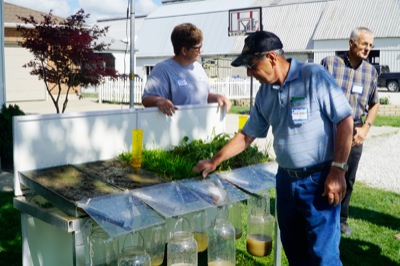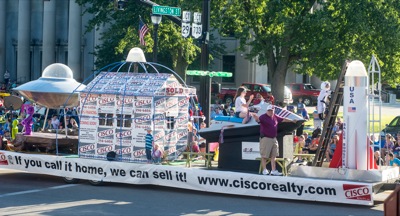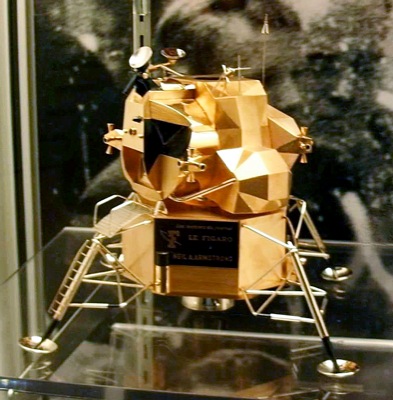Monday, July 31st, 2017
Tour visits farm
Event highlights efforts to help Grand Lake
By Sydney Albert

Photo by Sydney Albert/The Daily Standard
Gene Marshal feels the differences among five soil samples used in a rainfall simulator during Saturday's Our Land, Our Water Tour at the Schmitmeyer Farm. The machine was used to demonstrate how different conditions can affect surface runoff.
CELINA - About 40 area developers, politicians, farmers and business leaders gathered Saturday for the Our Land, Our Water Tour to learn more about land and manure-management efforts that could help improve Grand Lake's water quality.
The event was hosted at Schmitmeyer Farm on Siegrist-Jutte Road and was the second annual tour and presentation meant to bring together local people from all walks of life and educate them on efforts to improve the lake.
Participants were split into groups and rotated among different presentations. Terry Mescher, area engineer with the Ohio Department of Natural Resources, operated a rainfall simulation machine to demonstrate how runoff amounts could differ depending on soil condition, cover and management. Different soil samples were placed below a sprinkler, with a bucket below the samples to catch what was "absorbed" and another bucket catching surface runoff.
The simulation seemed to show that looser, less compacted land acted more like a sponge, absorbing water and producing less runoff. Mescher said in the beginning, Grand Lake cleanup efforts emphasized cover crops, which can help prevent soil erosion and lessen surface runoff, but researchers now are looking at a wider scope of soil health factors.
"I think one of the things the researchers are starting to do now is looking at not just cover but overall soil health - and that's organic matter, compaction, nutrient levels, biological activity in the soil, infiltration rates and all that," he said. "As far as phosphorus and nutrient-management control that, if we can get it to go down through the soil - the water to go down through the soil - we're going to maintain a lot more nutrients in the soil as well as the sediments. If it's coming off, it's awful hard to control."
Nutrient runoff comes from many sources, but in the Grand Lake Watershed, studies show it's mostly coming from farmland in the 58,000-acre, livestock-heavy watershed. Phosphorus found in manure is the main food source of the lake's toxin-producing blue-green algae.
Ag consultant Kevin Otte gave a presentation on soil sampling, explaining how to do it and the reason why soil sampling was important and outlining important nutrients and other factors that can be part of good soil. Participants also toured Schmitmeyer Farm's dairy facilities and saw a demonstration on how to properly spray pesticides and other chemicals.
Steven Jacquemin, an associate professor at Wright State University-Lake Campus, spoke on efforts that had been made to clean up the Grand Lake and Lake Erie watersheds. Both lakes have struggled with toxic algae and both have tested multiple remediation efforts from treatment trains to saturated buffers.
Jacquemin spoke on the efficacy of the manure ban, which restricts manure application from Dec. 15 to March 1 and is one of several rules farmers in the Grand Lake Watershed must follow after the state declared the watershed distressed. He helped analyze data to determine whether the ban on wintertime manure application reduced nutrient runoff and said nitrate and phosphorus levels dropped during a six-year monitoring period.
Still, excess nutrients are a worldwide issue, and Grand Lake was a microcosm of that, Jacquemin said. He called for cleanup efforts to continue and for more pilot projects to be launched.
"We need to be innovators," he said.




